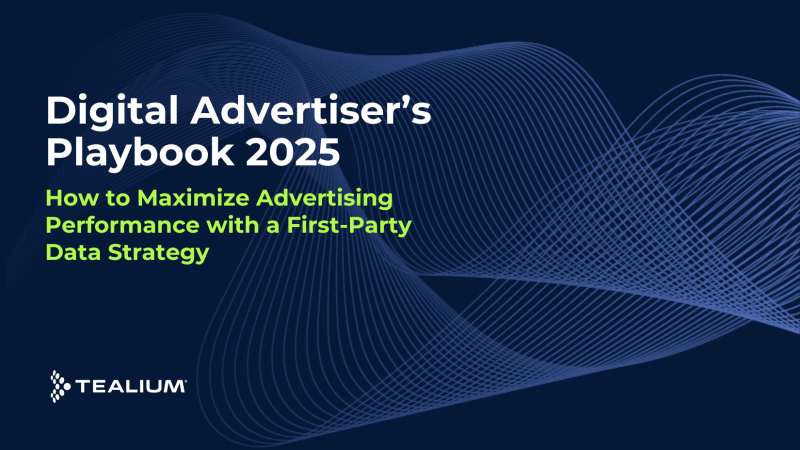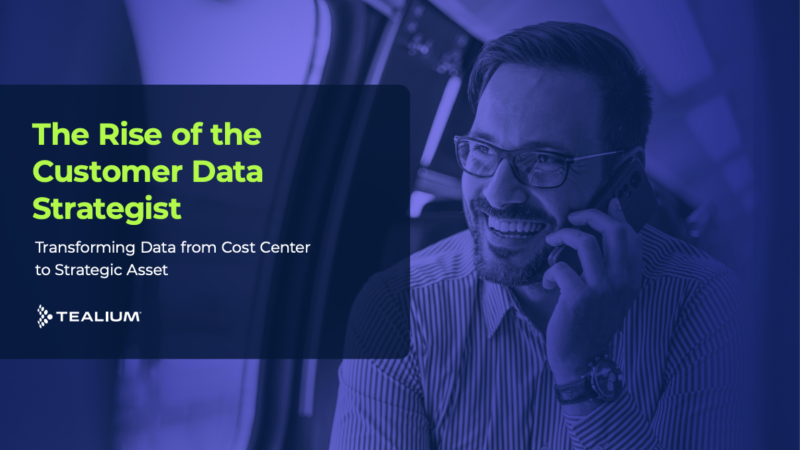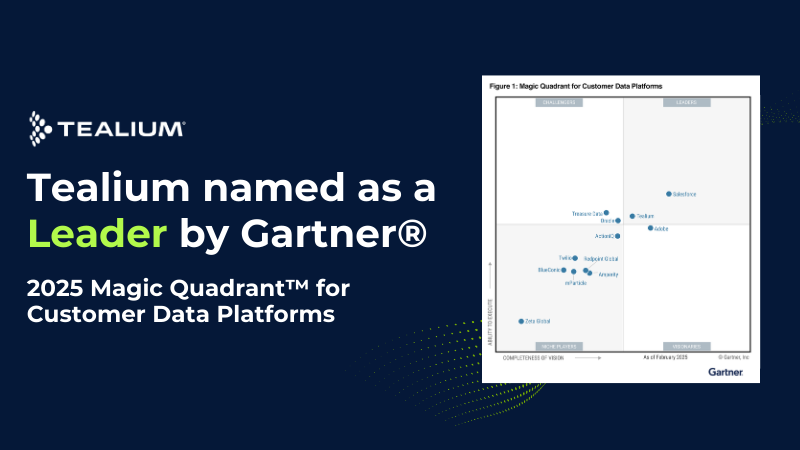CHECKLIST
Is your organization’s customer data ready to drive digital transformation initiatives like Single View of the Customer, Machine Learning, and Advanced Analytics?
Every large-scale digital transformation initiative relies on a foundation of trusted customer data. The tried and true “garbage in, garbage out” mantra remains prevalent for advanced analytics projects, machine learning algorithms, or single view of the customer initiatives.
In this checklist, we will walk you through 5 critical dimensions of data readiness and some of the questions we might ask your organization as a part of helping you deliver a high-quality data foundation.
There are 5 key dimensions to data readiness that Tealium can help you master including;
Defining Your Customer Data Strategy
To become data ready, you must first define your goal. Here are some questions you should be asking at this beginning stage:
Goal Setting: Have you identified the discrete audiences you will need to activate to achieve your goal?
Use Cases: What programs will you create to achieve your goals? (For example, will you be running ads to prevent churn? Will you personalize the website? Etc.)
KPIs: What success metrics will be used to define success?
Relevant Roles
We have highlighted the relevant roles to engage at each stage to increase your readiness:
Marketing and CX
Developers and Tech
Analytics and Data Science
Data Completeness
Digital initiatives like ML-powered predictive insights produce the best outcomes with a high volume of data, but this isn’t the only factor. Here are some questions to ask yourself about how much data you have access to:
Goal Mapping: Have you mapped your data flow all the way from the data source to how that data will trigger action to complete the goal? Have you mapped out what data from various systems will need to be combined for audience targeting and triggering actions?
Data Depth: Do you have a significant volume of data for the behavior you are trying to predict? Do you have historical data at least equal to the timeframe for when you would like to make a prediction? (For example, if you would like to predict a behavior happening in the next 6 months, do you have 6 months of data?)
Data Breadth: Do you have a significant amount of contextual data about each behavior you are analyzing? For example, if you are analyzing purchases, do you have data about the purchase like date, location, channel, etc.
Data Integrity
Poorly-defined or inconsistent data, regardless of volume, is useless to generate high-quality insights. Here is a list of questions we will walk you through at this stage:
Data Collection: Is all the necessary data coming in representing multiple stages of the customer journey? Is your data collected consistent with business logic?
Data Standardization: Do you have a vendor-neutral data layer in your own business language? Is data collected per your defined data layer so that it is as clean as possible on the way in?
Validation: Can you monitor incoming data quality in real time? Are there processes, procedures and tech in place for ongoing monitoring of incoming data quality?
Relevant Roles
We have highlighted the relevant roles to engage at each stage to increase your readiness:
Developers and Tech
Analytics and Data Science
Governance and Consent
The practices around the usage of your organization’s data are just as important as the data itself. To ensure you’ve got governance and consent built-in to your data foundation, here are some questions to ask yourself:
Visibility: Do you have a visual way to inspect the quality of data feeding your ML, single view of the customer or analytics initiatives? Can you inspect the level of data quality flowing in real time?
Roles: Can you control the access level that various users have so that less technical users can’t accidentally create problems? Is there an audit trail of who completes what actions?
Consent: Can you collect consent data on individual users who engage if consent has not been acquired? Can consent status be tied to data flows to ensure compliance?
Accessibility
To ensure your ML, data privacy, single view of the customer or analytics project returns value (a not-too-trivial consideration), data and insights need to be accessible to all other tools within your tech stack.
Portability: Can the data be delivered to drive action or further analysis across downstream systems? Can the same visitor attributes and the audiences based on them be used across integrated systems?
Orchestration: Are insights generated in a place where all customer data is analyzed and is available to trigger downstream action without additional development?
Versatility: Are the insights valuable across all integrated channels? Can insights be used to drive action or further analysis in other systems?
Ready to Take Your Data Projects to New Heights?
Tealium is an industry leader assisting hundreds of enterprises in constructing and optimizing their use of customer data. If you or your organization could improve its use of customer data to deliver exceptional customer experiences, please reach out to us today.













